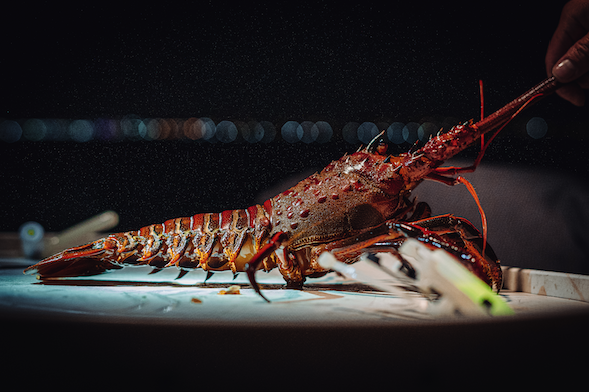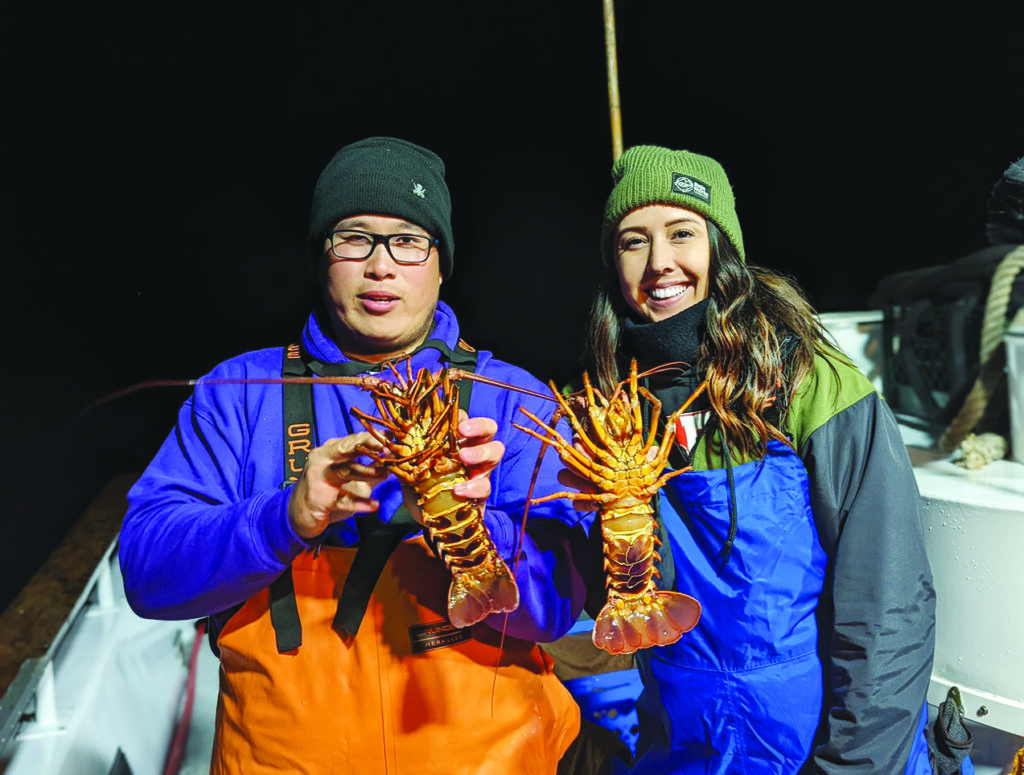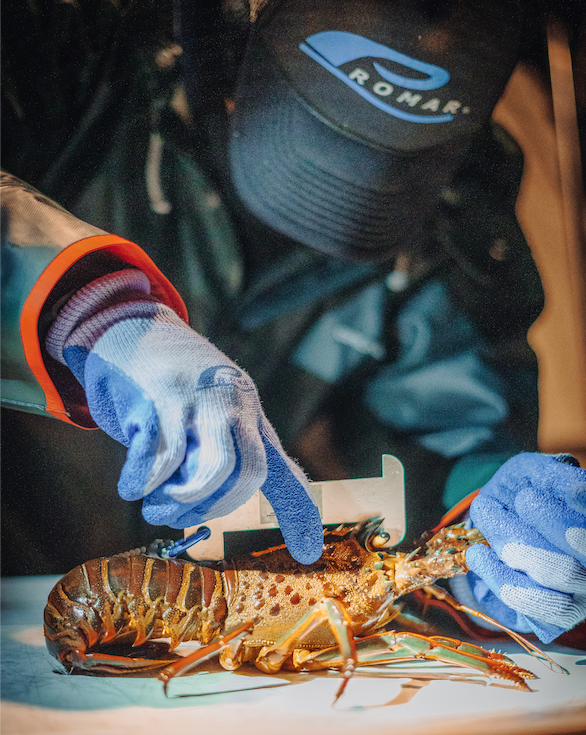
With the 2022-2023 California lobster season opening on Saturday, October 1st at 6:00 a.m, lots of people will be thinking about trying for their first lobster, motivated by the thought of delicious tail meat for dinner. Here are five steps to getting started.
1 – Buy a Spiny Lobster Report Card
The first step for any wannabe bug chaser is to get properly licensed. The quickest way to do this is to head your local CDFW-authorized dealer or go online to the dedicated license sales portal: wildlife.ca.gov/Licensing/Online-Sales
We always favor an in-person purchase as it supports local tackle and sports shops that sell licenses (most shops who sell fishing licenses will also sell lobster report cards) plus you can stock up on any kit you may need and get advice from staff. You need to be an existing fishing license holder to purchase a lobster report card, which costs just $10.80 this year.
You should fill this out with the correct gear and location codes prior to fishing and again if you move spots, regardless if you catch a legal lobster or not. Carry it on your person in a waterproof bag with spare pens at all times when lobster fishing.
2 – Get a measuring device
Your next must-have piece of kit is a proper measuring device. The legal minimum size for a keeper lobster is three and one-fourth inches (3 ¼ inches), measured in a straight line on the midline of the back from the rear edge of the eye socket to the rear edge of the body shell, known as the carapace.
A proper measuring device will enable to you quickly work out if the lobster you’ve just caught is a keeper, or not. Undersize lobsters should be returned immediately. Most tackle shops will sell a proper measuring device and it’s a good idea to have this attached to your person on a lanyard so it can’t get lost overboard, thus ending your lobster trip if you don’t have a spare.
One word of advice: if you measure a lobster and it’s borderline legal size-wise, return immediately. You might be a millimeter out in your measurement in the heat of the moment, and this could result in a hefty fine and court appearance should you be checked and the warden measures it as undersize.

3 – Get the right hoop net and accessories
Assuming you’re planning on targeting lobsters with a rigid hoop net (the most commonly-used method), this is your next big purchase. For general lobster fishing, a rigid hoop net is an effective and easy way to get started from pier, boat or kayak, and models like the Promar Ambush series are a great option.
The Promar Ambush XL (36-inch diameter, 6 pounds in weight) is a sweet option for boat and pier-based bug hunters, whilst the standard Ambush (32-inch diameter and 6 pounds), model is a little more manageable off a smaller skiff or kayak. Anyone fishing deeper water or heavy current might look at the much heavier XLH and XLHD models to hold fast in rough conditions.
You’ll also need a suitable length of rope– preferably lead core or sinking – for the depth of water you intend to target, plus a brightly-colored float with the facility to hold a large snap light and space to write on your license ID and phone number as per the regulations. Add a suitable seal-proof cage to house the bait and you’re set kit-wise.
4 – Secure some great bait
The quality of your bait and scent trail makes a big difference. Throwing some inert, freezer-burnt old cut offs into your bait cage might result in a bit of interest, but consider that the lobster is only finding your trap through scent, and that old frozen

offerings are not the optimum option for laying down a great scent trail for bugs to find. The best lobster chasers use fresh or recently frozen bait, carefully chopped and mashed to provide maximum attraction as its juices leak out into the pitch-black water. The oilier and bloodier the better, so fresh cuts from mackerel, bonito, dorado, tuna and sardines are great options.
One edge you might consider is the use of a dedicated lobster attractor. Ask your local tackle shop for their recommendations around these as there are a few options available, with most taking the form of a liquid spray or gel.
5 – Make a plan
You’ve got the license, hoop nets and sourced some great bait – now make a plan to get some of that sweet meat on the menu. Lobster fishing can be a cold, hard night’s work so go with friends or a crew you know and trust not to flake out. Set out times in advance so you don’t have to finish early because of some unspoken prior commitment. If on a boat, wear lifejacket, waterproofs and bring gloves because you will get wet hauling hoop nets. Don’t forget sea sickness tablets, hydration and snacks, too.
Once you’ve got your head round those issues, plan a trip. For boat or kayak-based hoopers, identify the local reefs, breakwaters, jetty systems and rocky areas that are likely lobster homes through careful study of detailed marine maps or existing knowledge of reliable reefy spots. Form a strategy around covering the area effectively over a few hours, hauling hoops and refreshing bait every 30 to 45 mins or so once you’ve established a pattern. Move spots if you’re just catching crabs and stingrays until you find the sweet spot in terms of depth, type of bottom and lobster numbers.
For the land-based hoop netters, any sort of pier or jetty system with rocks or reef nearby where you’re legally allowed to catch lobsters is worth trying. But consider the current and where this is sending your scent trails – set up so the current takes the scent away from the rocks and reef, and you won’t haul much. But drop upstream of a likely hidey hole, and they will move to find the food they can sense.
Staying legal when lobster fishing – key things to be aware of

One of the key aspects of lobster fishing is staying within the rules set out by the California Department of Fish and Wildlife. Here are the main points to be aware of in advance of planning any lobster fishing trip in Southern California, regardless of take method or location.
- Permit Requirements: CDFW Spiny Lobster Report Card and California recreational fishing license, available at CDFW’s Online License Sales and Service and through fishing license sales agents. An Ocean Enhancement Validation is also required if fishing in ocean waters south of Point Arguello (Santa Barbara County).
- The 2022 recreational lobster season opens on Saturday, October 1 at 6:00 a.m.
- Recreational Bag Limit: Seven lobsters per person.
- Minimum Legal Size Limit: Three and one-fourth inches, measured in a straight line on the midline of the back from the rear edge of the eye socket to the rear edge of the body shell (3 ¼ inch carapace). See page 5 of this week’s issue for a handy diagram.
- Skin and SCUBA Diver Gear Requirements: All skin and SCUBA divers must only use their hands to take lobster.
- Pier Fishing Gear Requirements: You may use up to 2 hoop nets while fishing from a public pier.
- Vessel Fishing Gear Requirements: You may possess up to 5 hoop nets while fishing from a vessel, but the total number of hoop nets from a vessel cannot exceed 10, even if there are more than 2 people on the boat
- You must fill out the relevant part of the official report card before you start fishing with the correct gear and location code. You must complete the relevant parts before moving locations or finishing your trip, regardless if you caught a legal lobster or not.

2019-2020 Top 10 Locations (by percent of reported catch)
- Catalina island (15.6%)
- San Diego Bay (13.3%)
- Point Vicente up to King Harbor (7.9%)
- Long Beach/Middle Breakwater (5.8%)
- King Harbor up to Santa Monica (3.7%)
- Santa Monica up to Malibu Point (3.6%)
- Santa Cruz Island (3.5%)
- Zuniga Jetty (3.4%)
- Dana Point Jetties (2.4%)
- Mission Bay (2.3%)
2019-2020 Catch by Gear Type (by percent of reported catch)
- Rigid Hoop Net (47.9%)
- Free Diving (21.5%)
- SCUBA Diving (21.4%)
- Traditional Hoop Net (9.1%)
2019-2020 Catch per Unit Effort by Gear Type (average number of lobsters per trip)
- SCUBA Diving (3.06 lobsters/trip)
- Rigid Hoop Net (2.30 lobsters/trip)
- Free Diving (2.08 lobsters/trip)
- Traditional Hoop Net (1.73 lobsters/trip)
Please note that this is not an exhaustive list of regulations – visit wildlife.ca.gov/Conservation/Marine/Invertebrates/Lobster for a full list and be aware that it’s your responsibility to know the rules and regulations relevant to your area and method of take.
Thank you to CDFW for the information and data used in this article.


